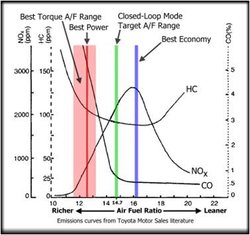The F-150 is pretty disappointing in the mpg dept with the v8. I was honestly expecting better with the 10 speed and aluminum body.
highway fuel mileage in a large pickup comes down to aerodynamic drag, heat losses, , pumping losses and rolling resistance. 10spd and AL body panels do nothing for either of these factors so you can expect the results to be less than stellar.



